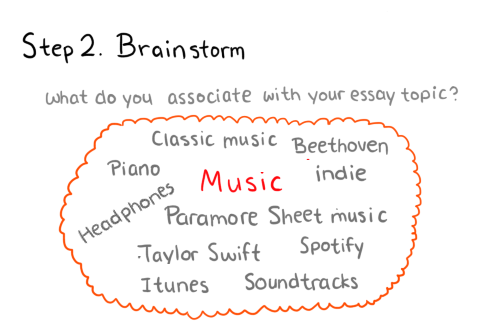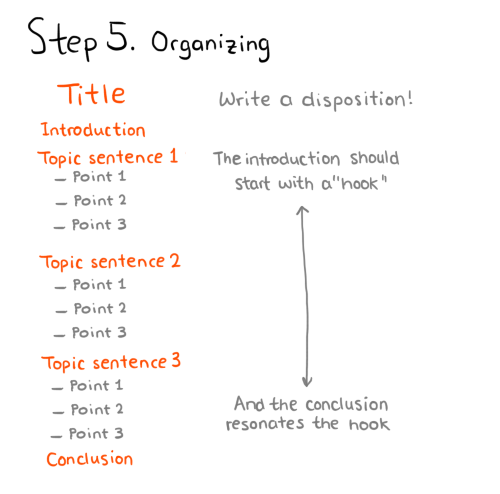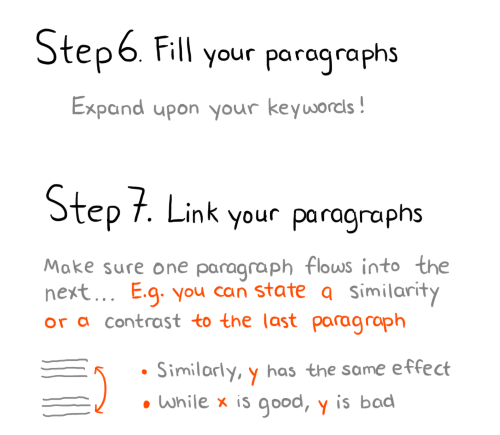Wonderful!
Wonderful!




#1 Get Comfortable
Nothing distracts you more than uncomfortable clothes! So wear all the things you are feeling completely comfy in and put your hair of the way. Personally, I like to wear simple shirts and yoga pants or leggings, also I put my hair up in a bun. And: forget the bra, girl! You are just sitting in front of your desk, no one cares. You should also make sure that, especially in winter, your feet won’t get cold. So: some cozy socks are needed!
#2 Tidy Up
I just can’t concetrate when my room is a mess, so normally I’ll tidy my complete room before I start my study session. This will help you so you don’t get easily distracted when you study and you’ll have more space to spread your notes around.
#3 Set Up Your Study Space
You don’t want to interrupt your studying because you have to get something you need, do you? So make sure you have everything you need before you start. And don’t forget to stay hydrated! So always have a bottle of water by hand, it will increase your productivity and help you to stay concentrated!
More Posts from Nofiafitri and Others


7 Tahun Aliansi Kebangsaan terus berkiprah demi mewujudkan cita cita Bangsa Indonesia untuk Merdeka, Bersatu, Berdaulat, Adil dan Makmur.

Had a short dialog with Prof. Dawam at Jaring Cendekia - Aliansi Kebangsaan.
I need this! Indeed 😍







Ten steps to writing an essay //Science Scribbles
-Fenomena “Local Bossism” dan Kegagalan Partai Politik-
Oleh: Nofia Fitri (INSPESIA Researcher)
Pada dasarnya aku bukan tipikal "student" yang begitu tertarik dengan riset-riset tentang Desentralisasi dan bagaimana implementasi otonomi daerah itu sendiri di Indonesia. Apalagi faktanya di negeri ini, memberikan kewenangan kepada daerah justru memperbesar potensi korupsi dan authority para penguasa-penguasa lokal, ditambah lagi bargaining antar Partai dengan para pemilik modal yang birahi terhadap kekuasaan Politik.
Artikel berikut adalah sedikit pandangan ku tentang apa yang terjadi di Banten dan Fenomena Local Bossism.
Alhamdulillah artikel ini cukup mendapat apresiasi dari Dosen ku Ibu Riaty Rafiudin Ph.D, tapi bukan pada penyajian analisisnya, karena jujur metode pengumpulan data melalui kepustakaan tidaklah cukup menjawab permasalahan yang diangkat. Namun teknik penulisan dan gaya bahasa yang dipakai yang menampillkan orisinalitas seorang penulis akademis.
Thanks God, sedikit semangat untuk mengembalikan produktivitas seorang Penulis (baca: Peneliti) ditahun 2018.
Semoga bermanfaat kawan-kawan! ;)
http://nofiafitri.id/fenomena-local-bossism-dan-kegagalan-partai-politik/.html

When my study room moves to my dinning room 😍 .. Xoxoxo hellcome my examination, what a perfect pregnancy life with several paper submissions.. #studentlife #UniversityofIndonesia #pregnantstudent#mommyslife #bigbelly
Thanks ❤️










every minute spent on planning saves you ten minutes spent on execution. short essays probably don't require that much preparation beforehand, but if you're writing something longer you should probably spend some time planning first. this is the process i go through when planning my essays, and i find it works really well!
My New Tumblr Account
Dear all, well this is my first time on using tumblr.. Wish me luck, yeaaaay.... ^_^
HOW TO WRITE A STRONG ESSAY
I recently got an ask about how to write an introductory paragraph for an essay so I thought I’d do a post about how to write a good essay.
** Important Points ** For essays in high school, use third person unless the teacher specifically tells you not too. It’s more academic and professional while first person sounds really informal. I’ve heard that in college it’s different but again, it depends on the class. Stay on the safe side and use third person unless otherwise specified. Also, try to be as sophisticated and mature as you can. This makes the essay sound smarter and makes it easier to read.
1) INTRODUCTION
Try to think of an upside down pyramid here. You start off broad and end off tapered to a point (specific). The formula for writing a good intro is this: hook, background info, introduce topic of discussion, and thesis. In the pyramid example, the hook is the broad and the thesis is the narrow. The intro is usually around 8 sentences long.
Hook: Unlike what you’ve probably been told through out high school, the hook is not necessarily a wow statement. It’s typically a broad idea that relates to the topic of discussion. I usually use historical facts or common wisdom and go from there. I then follow it up with a sentence that elaborates on my hook and a sentence that connects my hook with the background info.
Background Info: Here you give the reader some context as to what you will be discussing in your essay. It sets the scene for the topic you’re discussing. Try to be concise.
Introduce the Topic of Discussion: Here you give a brief summary of the points you’re arguing/discussing. It should be one sentence per body paragraph and again, be clear and concise and avoid merely summarizing the plot. This part should cover the gist of your ideas.
Thesis: This should be a longer complex sentence that summarizes your point of view and ideas. This is one of the most important parts of the essay so crafting a good thesis is crucial.
I did a more detailed post about the introduction with an example introduction paragraph HERE.
2) BODY PARAGRAPHS
The meat of your essay. Here is where you state your arguments and defend them with supporting evidence from literature, articles, or even your personal experience. I would generally limit one argument per body paragraph. Which reminds me, most likely you have been taught the canned five paragraph essay. Some people write all their essays in five paragraph format because they thing that is the only way to go. Really, you can do four+ body paragraphs with the common numbers being four and six. It depends on the essay. When writing your body paragraph you need this structure: topic sentence, three points, three examples of supporting evidence, conclusion. Body paragraphs typically fall between 8 -15 sentences.
Topic Sentence: This is similar to a thesis. Here you’re stating the argument that you are proving in a clear and concise sentence.
Three Points: There’s a rule of thumb that you generally want to have three points about each argument and have a piece of supporting evidence for each point. I’m going to start with the three points first. Basically, you want three ideas about your argument that show why it’s valid. For example if you’re trying to argue that cheese is dairy, your three points are it’s made of milk, it’s featured in the dairy section of the grocery store, and the FDA labels it as dairy.
Three Examples of Supporting Evidence: These are usually quotes from other sources or the piece of literature you’re analyzing that support the three points of your argument. To use the really bad cheese example from above, for the milk point you’d use an ingredients label from a package of cheese, for the grocery store point you’d get a sheet with the department labels and the produce in those departments, and for the FDA point you’d find a quote from their website.
Conclusion: This is a sentence or two that wraps up your body paragraph. It should briefly summarize the points you discussed or the topic sentence and help transition into the next paragraph.
2) a. COUNTER ARGUMENT PARAGRAPHS
This paragraph is NOT necessary for most essays. However, some do require them so it’s important to know how to approach them. Depending on whom you ask, they’ll either tell you that the counter argument paragraph goes in the middle of your body paragraphs, or at the end. Personally I prefer the end but the middle is more correct. Placing it in the middle allows you to end on a strong note but I think it’s a matter of personal preference. The counter argument is used to present an opposing view point and say why it’s wrong. This can strengthen your argument if it’s done properly but ruin it if it’s done wrong so tread carefully. The only thing different from the body paragraph structure is the topic sentence.
Topic Sentence: Here you need a specific template to start the paragraph properly. I usually use: It may be argued that _______________ but there is sufficient evidence to show that _______________. The first blank is filled with the opposing argument and the last blank is your argument. There are different ways to structure this sentence but this is the one I use.
The rest of the paragraph is the same as the body paragraph: you get three points as to why the counter argument is wrong and three points to support it. Then you end with a typical concluding sentence.
3) CONCLUSION
This is where you wrap up your arguments and finish strong. It has three components: a restatement of your thesis, summary of your arguments, and general statement to wrap it up. Think of the right side up pyramid this time. The pointy end is the thesis and the bottom is the general statement that closes your essay. A conclusion is typically 5 sentences long.
Restatement of Thesis: This is pretty self explanatory; you restate the thesis using different language than you used in your intro.
Summary of Arguments: Here you briefly touch upon the arguments you covered in your essay. Again, clear and concise, and whatever you do, DO NOT introduce new information. It can ruin the amazing essay you worked so hard on.
General Statement: A general statement is a broad idea that you use to tie your entire essay together. It’s kind of like the hook but should be more relevant to your essay.
And that is how you write a killer essay. I use this technique whenever I write and it has never failed me. Hopefully if will help you improve your writing! If you have any questions, feel free to hit up my ask box.
Do you have any tips for studying politics? Specifically political essays?
Hey!
How to Study
How to Write a Politics Essay
Example Essays
Writing Essays for Politics
Guidelines for Writing a Politics Essay
-
 effortwillneverbetrayyou liked this · 7 years ago
effortwillneverbetrayyou liked this · 7 years ago -
 maryyyyjaneeeee liked this · 9 years ago
maryyyyjaneeeee liked this · 9 years ago -
 jetgirlstudies-blog reblogged this · 9 years ago
jetgirlstudies-blog reblogged this · 9 years ago -
 mlevin3898 liked this · 9 years ago
mlevin3898 liked this · 9 years ago -
 smilez199843 reblogged this · 9 years ago
smilez199843 reblogged this · 9 years ago -
 smilez199843 liked this · 9 years ago
smilez199843 liked this · 9 years ago -
 nijiru reblogged this · 9 years ago
nijiru reblogged this · 9 years ago -
 moon-in-paradise liked this · 9 years ago
moon-in-paradise liked this · 9 years ago -
 expressingisthepoetsart liked this · 9 years ago
expressingisthepoetsart liked this · 9 years ago -
 lulu1594-blog liked this · 9 years ago
lulu1594-blog liked this · 9 years ago -
 studyfuel reblogged this · 9 years ago
studyfuel reblogged this · 9 years ago -
 inkelis liked this · 9 years ago
inkelis liked this · 9 years ago -
 haelthymind reblogged this · 9 years ago
haelthymind reblogged this · 9 years ago -
 tea-and-revise-blog reblogged this · 9 years ago
tea-and-revise-blog reblogged this · 9 years ago -
 coffeebeankylee liked this · 9 years ago
coffeebeankylee liked this · 9 years ago -
 we-are-merelyplayers liked this · 9 years ago
we-are-merelyplayers liked this · 9 years ago -
 linguisticloud liked this · 10 years ago
linguisticloud liked this · 10 years ago -
 sassabethjackson17 liked this · 10 years ago
sassabethjackson17 liked this · 10 years ago -
 lindafischbach reblogged this · 10 years ago
lindafischbach reblogged this · 10 years ago -
 lindafischbach liked this · 10 years ago
lindafischbach liked this · 10 years ago -
 meowingpanda reblogged this · 10 years ago
meowingpanda reblogged this · 10 years ago -
 briaz liked this · 10 years ago
briaz liked this · 10 years ago -
 allthesethingsthative-read reblogged this · 10 years ago
allthesethingsthative-read reblogged this · 10 years ago -
 lilmudkip liked this · 10 years ago
lilmudkip liked this · 10 years ago -
 cupofsoup-23 liked this · 10 years ago
cupofsoup-23 liked this · 10 years ago -
 thebookishbaker reblogged this · 10 years ago
thebookishbaker reblogged this · 10 years ago -
 thebookishbaker liked this · 10 years ago
thebookishbaker liked this · 10 years ago -
 yvetheartist reblogged this · 10 years ago
yvetheartist reblogged this · 10 years ago -
 studyobsessed reblogged this · 10 years ago
studyobsessed reblogged this · 10 years ago -
 indiemindca liked this · 10 years ago
indiemindca liked this · 10 years ago -
 dakin33 liked this · 10 years ago
dakin33 liked this · 10 years ago -
 lazy-minerva reblogged this · 10 years ago
lazy-minerva reblogged this · 10 years ago -
 total-verdrehte-welt reblogged this · 10 years ago
total-verdrehte-welt reblogged this · 10 years ago -
 ova-achiever reblogged this · 10 years ago
ova-achiever reblogged this · 10 years ago -
 actual-trash-can liked this · 10 years ago
actual-trash-can liked this · 10 years ago -
 hannah-ac reblogged this · 10 years ago
hannah-ac reblogged this · 10 years ago -
 hannah-ac liked this · 10 years ago
hannah-ac liked this · 10 years ago -
 nixxstudies reblogged this · 10 years ago
nixxstudies reblogged this · 10 years ago
Hi everyone.. I'm a Researcher who interesting on the political issues. I'm doing master on International Relations and Political Science at University of Indonesia. Please don't hesitate to contact me through this. I'm also the owner of Warung Data IT...
74 posts
